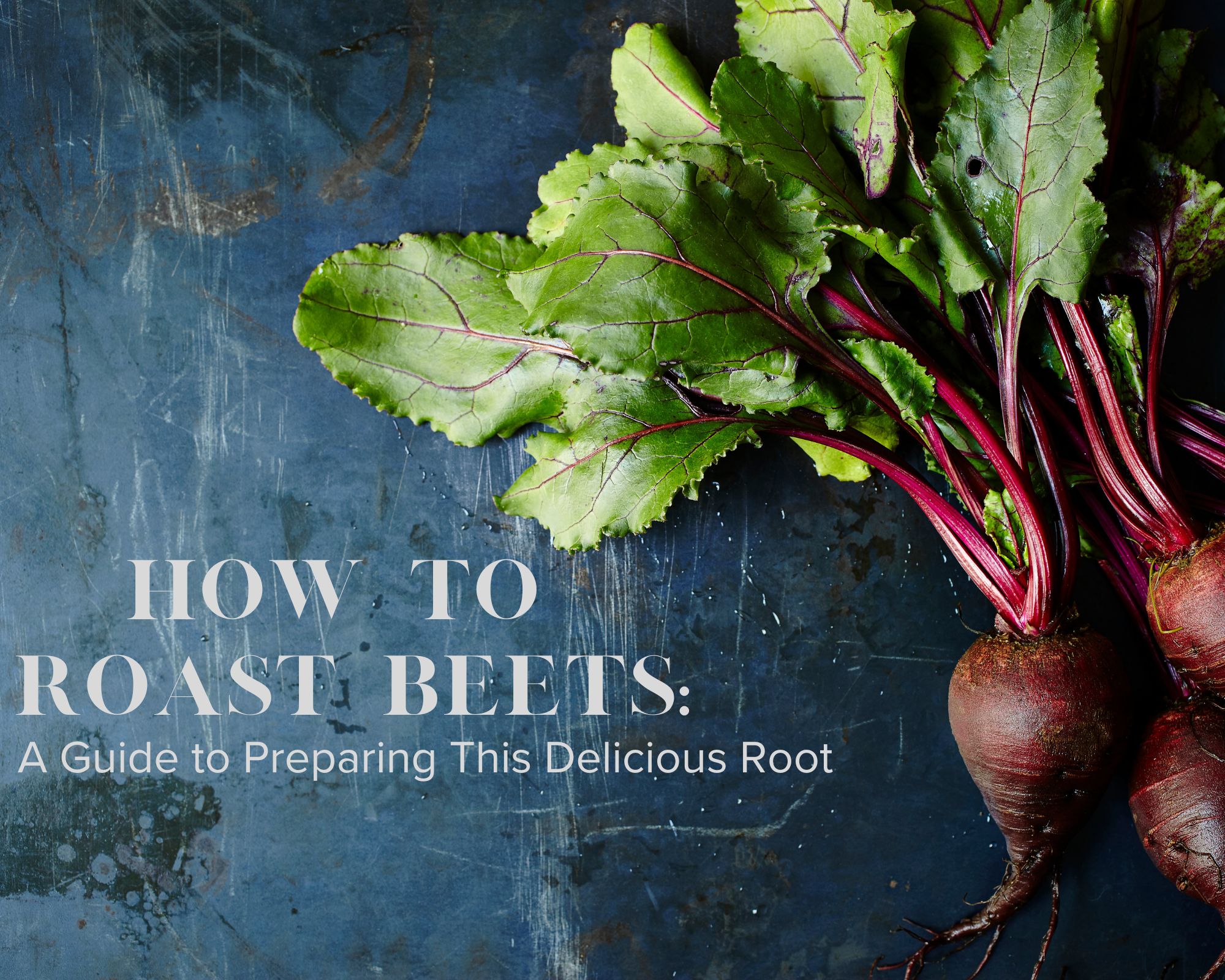The humble beet is having a bonanza moment! This bejeweled tone superfood is making a ‘beet-line’ straight onto more menus and into more dishes and homes than ever. Found in cuisines around the world, beets are enjoying a well-deserved hero status for their color, versatility, and complex, earthy flavor. And aside from their culinary range, beets are a nutrient-dense powerhouse, loaded with essential vitamins, minerals, and fiber.
Let’s take a look at some of the many ways beets can be prepared and shared. If your first thought of beets is borscht, you’re not alone – borscht is a classic Eastern European soup with a long and significant cultural history, and it really IS quite delicious served hot or cold.
But today, beets are trailblazing a culinary path in everything from beet hummus to beet juice shots; beet burgers to beet pasta and beet baked goods. But let’s start with the beet basics, shall we?
Pick the Best Beets
Beets really do come in bold jewel-toned colors; the most common being red beets with their deep, dark, almost purple hue. Golden beets can be any shade of bright yellow to gold and are milder in flavor compared to red. White beets are mild flavored like the golden variety, but are less common in mainstream supermarkets (although you might see them at farmer’s markets, depending on where you live). Candystripe beets, also known as Chioggia beets, are white with concentric circles of red or pink within the white flesh and make for a stunning visual as a garnish or in a salad. Look for heavy and firm unblemished beets with vibrant colors, preferably with their greens attached so you know they’re extra fresh (save those greens for use in a salad – the nutrients are prominent there, too). Choose beets based on your recipe and taste preference and avoid beets with wilted greens or shriveled skins, which means they’re old and dehydrated.
How to Prep Beets
It’s wise to wash all produce, but beets in particular are due for a good scrub, since they grow under the ground and dirt can collect in the small creases of the skin. A vegetable brush works nicely here, and will easily remove any dirt. Trim off the leafy tops, but leave about an inch of the stem intact.
To Peel or Not to Peel?
There are pros and cons to peeling beets, but ultimately, it depends on the recipe and your personal preference.
Peeling beets gives them a smoother texture, makes them more visually appealing, and they might taste a little sweeter when the bitter skin is removed. This is especially true for larger or older beets. Leaving the skins on, however, retains much of the beets’ vitamins and minerals and many home cooks find peeling beets time-consuming, difficult, and messy.
To peel beets before cooking, simply use a paring knife or vegetable peeler to remove the skin in downward strokes and trim the root and stem.
After cooking, beets are easier to peel, but wait until they are cool enough to handle. Gently peel or rub the skin away using your finger or a paper towel.
How to Roast Beets
Once you’ve selected the perfect beets, here are three ways to roast those radiant reds to tender perfection:
Oven Roasting:
Preheat your oven to 400 degrees F (200 degrees C).
1. Trim the tops and roots of the beets, then peel and cut them into uniform-sized pieces.
Toss the beet pieces with olive oil, salt, and pepper.
Spread the beets in a single layer on a baking sheet.
Roast in the oven for 30-40 minutes, or until the beets are tender, stirring halfway through.
Or
2. Trim the tops and roots of the beets. Place each one on a piece of foil.
Drizzle olive oil and sprinkle salt and pepper over each one. Wrap the foil around each beet, twisting the top to seal.
Add each foil-wrapped beet to a baking sheet and bake 45 – 60 minutes. They are done when a knife slides in easily.
Let cool, peel with your fingers or a towel and slice.
Instant Pot Roasting:
Peel and cut the beets into cubes.
Place the beets in the instant pot with a cup of water.
Seal the instant pot and set it to high pressure for 8-10 minutes.
Once done, release the pressure and drain any excess liquid.
Toss the beets with your favorite seasonings and a drizzle of olive oil.
Air Fryer Roasting:
Preheat your air fryer to 375 degrees F (190 degrees C).
Toss peeled and cubed beets with olive oil, salt, and pepper.
Place the seasoned beets in the air fryer basket in a single layer.
Cook for 15-20 minutes, shaking the basket halfway through, until the beets are golden and crispy.
What Can You Do with Leftover Roasted Beets?
Use leftover roasted beets in salads, dips, or spreads, or a smoothie. Similar to applesauce, pureed beets make a natural sweetener in baked goods and add a beautiful tint to muffins, quick breads, and cakes.
